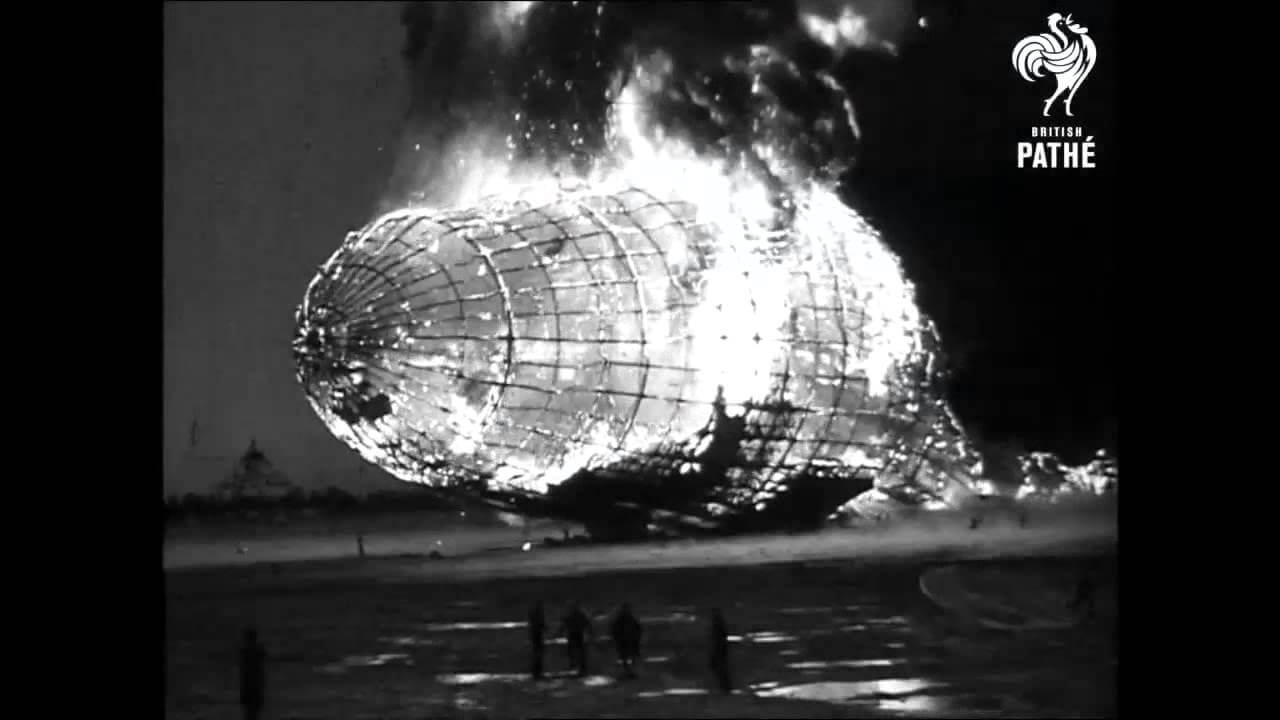Hindenburg Disaster.
Footage of the German airship catching fire, crashing and burning to the ground: This original footage from the British Pathe archive shows impressive shots of the Hindenburg flying overhead on on Thursday, May 6, 1937, flying over its landing ground at Lakehurst, New Jersey, and then finally there is footage of the famous crash.
The Hindenburg disaster was a catastrophic event that occurred on May 6, 1937, when the German passenger airship LZ 129 Hindenburg caught fire and was destroyed while attempting to land at Naval Air Station Lakehurst in Manchester Township, New Jersey, USA. The disaster resulted in the deaths of 36 people, including passengers, crew members, and one worker on the ground, and marked the end of the era of passenger airship travel.
The Hindenburg was a large, rigid airship filled with highly flammable hydrogen gas. As it approached the mooring mast at Lakehurst, a spark ignited the hydrogen, causing a massive fireball that consumed the airship in a matter of seconds. The disaster was captured on film and in photographs, making it one of the most iconic aviation accidents in history.
Several factors contributed to the disaster, including the highly flammable hydrogen used for buoyancy, a thunderstorm in the vicinity, and the use of a flammable skin covering the airship’s structure. The disaster led to a shift away from hydrogen in favor of helium, which is not flammable, for use in airships. It also marked the decline of passenger airships as a mode of transportation, with fixed-wing aircraft becoming the dominant means of long-distance travel.
The exact cause of the spark that ignited the hydrogen remains a subject of debate and investigation. The disaster was a tragic event, and it had a profound impact on the development of airship technology and air travel safety.

